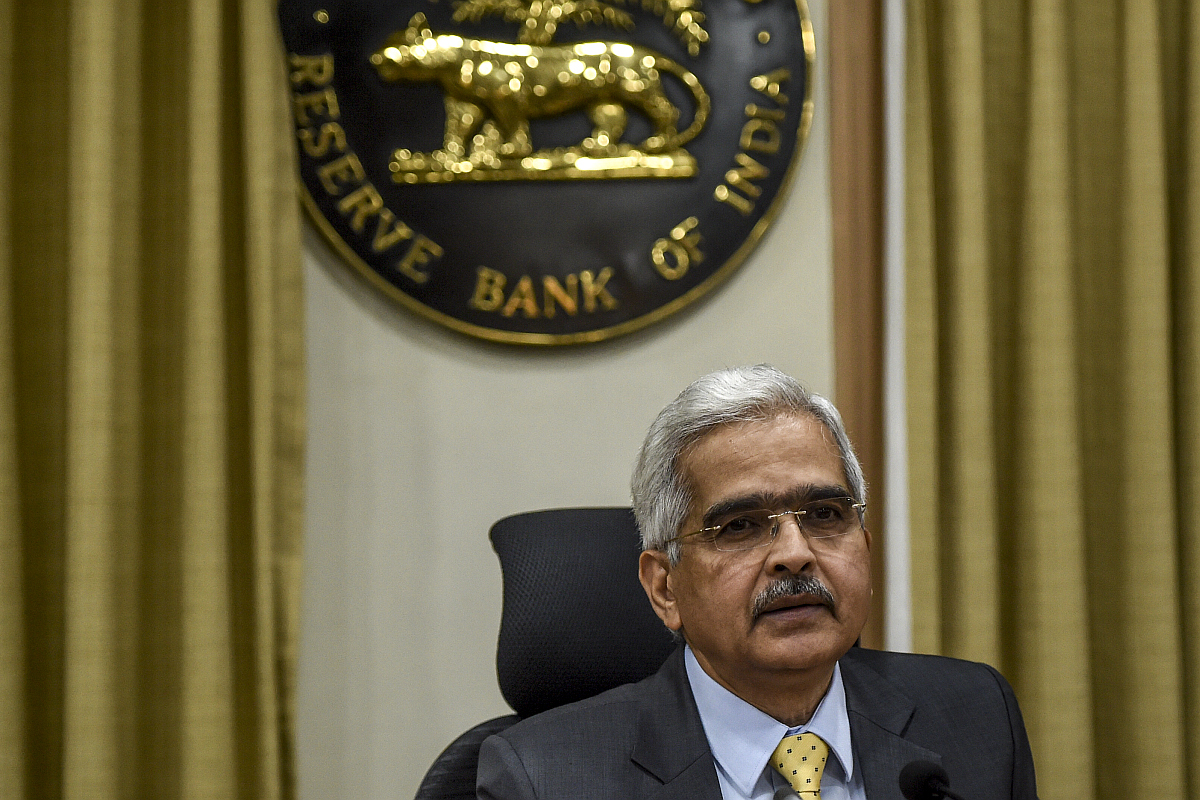Former RBI Governor appointed Principal Secretary-II to PM
Dr P K Mishra is the Principal Secretary-I to the Prime Minister.
The outlook of inflation also remains “highly uncertain”, RBI Governor Shaktikanta Das said while announcing a 40-basis point cut in the repo rate as part of the monetary measures to deal with the current crisis.

Reserve Bank of India (RBI) Governor Shaktikanta Das speaks during a press conference. (Photo: AFP)
Highlighting the impact of COVID-19 pandemic on the economy, the Reserve Bank of India Governor Shaktikanta Das on Friday said that the GDP growth in 2020-21 is likely to remain in the negative territory.
The outlook of inflation also remains “highly uncertain”, RBI Governor Shaktikanta Das said while announcing a 40-basis point cut in the repo rate as part of the monetary measures to deal with the current crisis.
Advertisement
“GDP (gross domestic product) growth in 2020-21 is estimated to remain in negative territory, with some pick-up in growth impulses from second half of 2020-21 onwards.”
Advertisement
It is the second sharp cut in the key policy rate in two months. On March 27, the Monetary Policy Committee (MPC), the rate-setting panel of the RBI, had cut the key short-term lending rate by 75 basis points.
In a televised address, the governor observed that the risk to the growth are “gravest”. He said that “the combined impact of demand compression and supply disruption will depress economic activity in the first half of the year”.
“Assuming that economic activity gets restored in a phased manner in the second half of this year and taking in consideration favourable base effect, it is expected that combined fiscal, monetary and administrative measures currently undertaken by both the government and RBI create conditions for gradual revival of activities in the second half of 2020-21.
“GDP growth in 2020-21 is estimated to remain in the negative territory with some pick up in growth impulses in the second half of 2020-21 onwards,” he said.
“Nonetheless, downside risks to this assessment are significant and contingent upon the containment of the pandemic and quick phasing out of social distancing/lockdowns,” Das said, adding that much would depend on how quickly the COVID-19 curve flattens and begins to moderate.
Das said that the end-May 2020 release of NSO on national income should provide greater clarity, which will enable more specific projections of GDP growth in terms of both magnitude and direction.
Das-headed MPC, whose meeting was advanced, was of the view that the macroeconomic impact of the pandemic is turning out to be more severe than initially anticipated, and various sectors of the economy are experiencing acute stress. Also, the impact of the shock was compounded by the interaction of supply disruptions and demand compression.
In view of the virus crisis, the three-day meeting of the rate-setting body was advanced to May 20-22 from the earlier scheduled date of June 3-5.
“The recent release of macroeconomic data, that for the first time revealed the damage wrought by COVID-19, brought forward the need for an off-cycle meeting of the MPC,” the governor said.
He said domestic economic activity has been impacted severely by the two-month lockdown. The top-six industrialised states that account for about 60 per cent of industrial output are largely in red or orange zones.
Giving details, he said electricity and petroleum products consumption, indicators of day-to-day demand, have plunged into steep declines.
The double whammy in terms of losses of both demand and production has, in turn, taken its toll on fiscal revenues, he said.
Investment demand has been virtually halted by a decline of 36 per cent in the production of capital goods in March, which was coincident with a contraction of 27 per cent in imports of capital goods in March and 57.5 per cent in April.
“The biggest blow from COVID-19 has been to private consumption, which accounts for about 60 per cent of domestic demand,” Das said in his nearly 30 minutes address.
He said that by all counts, the macroeconomic and financial conditions are austere. “The global economy is inexorably headed into recession.”
As he projected a grim outlook for the economy, Das also said that “amidst this encircling gloom”, agriculture and allied activities have provided a beacon of hope on the back of an increase of 3.7 per cent in foodgrains production to a new record.
A ray of hope also comes from the forecast of a normal southwest monsoon in 2020 by the India Meteorological Department.
Advertisement